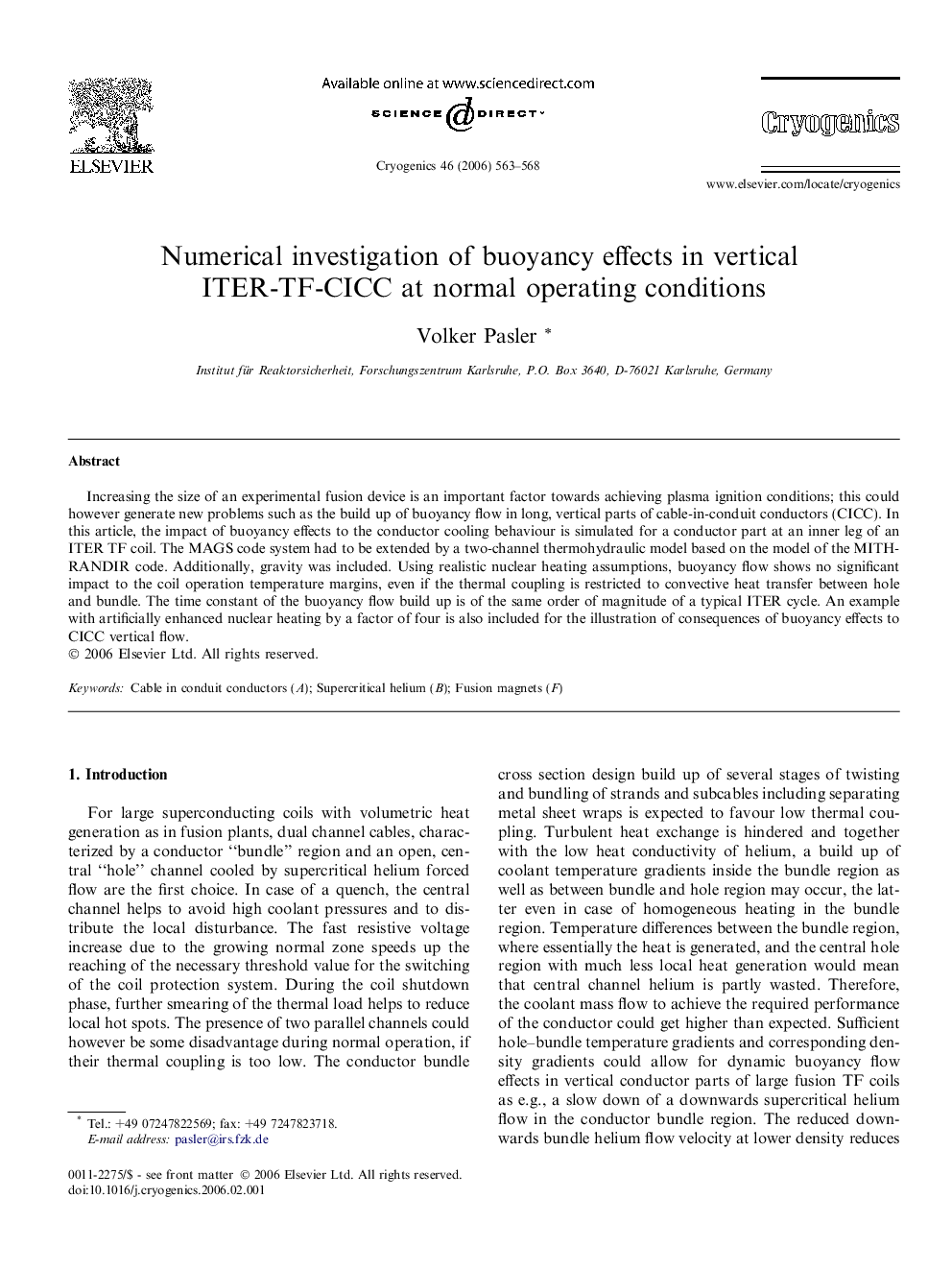| Article ID | Journal | Published Year | Pages | File Type |
|---|---|---|---|---|
| 1508370 | Cryogenics | 2006 | 6 Pages |
Abstract
Increasing the size of an experimental fusion device is an important factor towards achieving plasma ignition conditions; this could however generate new problems such as the build up of buoyancy flow in long, vertical parts of cable-in-conduit conductors (CICC). In this article, the impact of buoyancy effects to the conductor cooling behaviour is simulated for a conductor part at an inner leg of an ITER TF coil. The MAGS code system had to be extended by a two-channel thermohydraulic model based on the model of the MITHRANDIR code. Additionally, gravity was included. Using realistic nuclear heating assumptions, buoyancy flow shows no significant impact to the coil operation temperature margins, even if the thermal coupling is restricted to convective heat transfer between hole and bundle. The time constant of the buoyancy flow build up is of the same order of magnitude of a typical ITER cycle. An example with artificially enhanced nuclear heating by a factor of four is also included for the illustration of consequences of buoyancy effects to CICC vertical flow.
Related Topics
Physical Sciences and Engineering
Materials Science
Electronic, Optical and Magnetic Materials
Authors
Volker Pasler,
